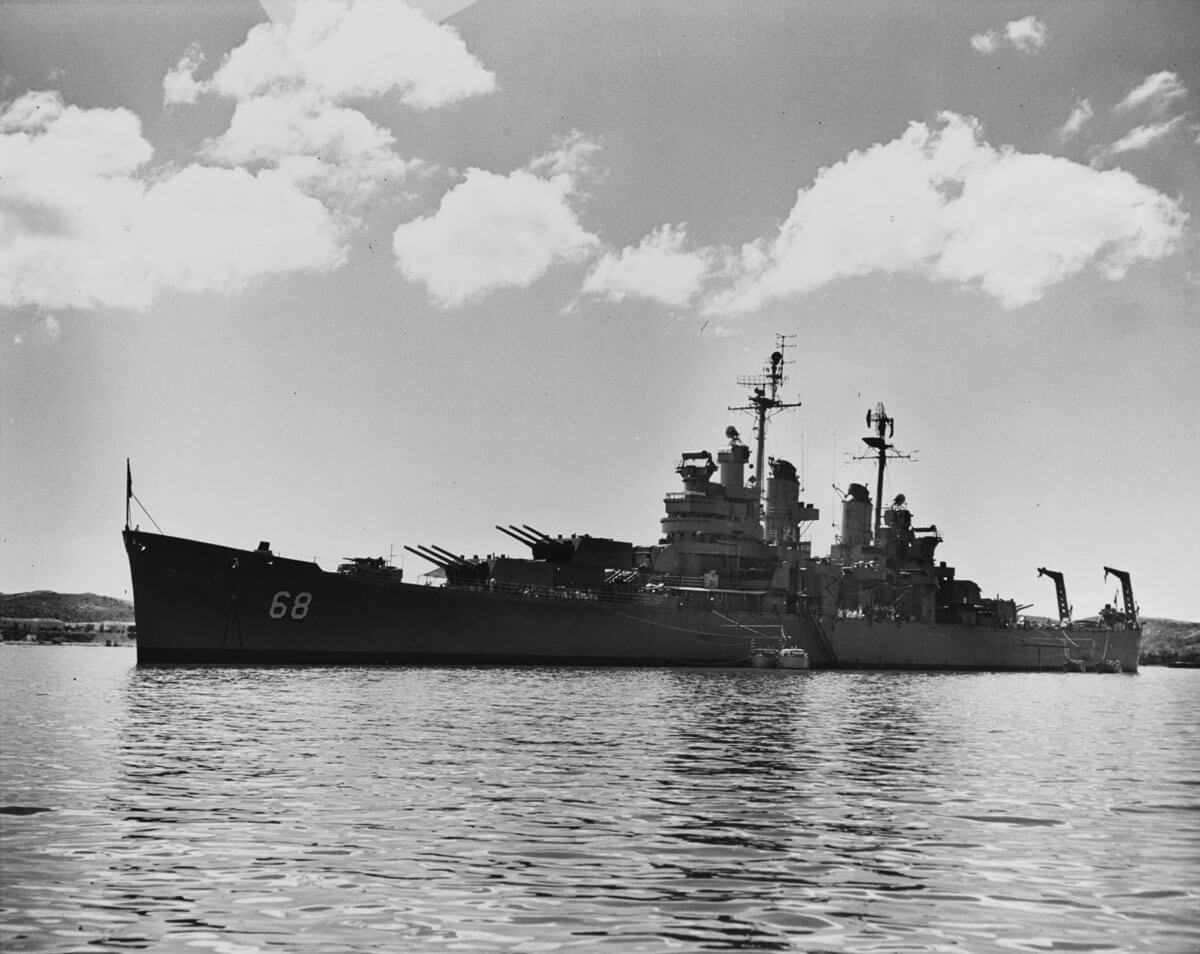Asbestos Exposure on Baltimore-Class Cruisers

Baltimore-class cruisers mostly played a support role during WWII. Heavier than the Cleveland-class but lighter than the Alaska-class, they represented the middle weight class of cruisers. Many military experts consider the Baltimore-class to be the best cruisers of WWII on account of the ships’ impressive combination of armor, firepower, and speed.
History of Baltimore-Class Cruisers
The United States Navy began designs for these cruisers as early as 1939, when war was just breaking out in Europe. The first Baltimore-class cruisers were authorized for construction in July 1940, but none entered service until April 1943. They were built in Quincy, Philadelphia, and New York City.
Unlike many other American cruiser classes, the Baltimore-class was never restricted by previous treaty-imposed weight limitations. Their design drew on that of previous ships, which had respected the treaties’ statutes, but the Baltimore-class was far heavier and more powerful. In fact, compared to predecessors, cruisers of the Baltimore-class were 20 percent more powerful. These ships also incorporated a key new military innovation—the combat information center—which allowed radar to be deployed and interpreted onboard. The Baltimore-class also included a sub-class, the Oregon City, that was nearly identical but had a shortened superstructure.
Fourteen Baltimore-class cruisers were commissioned, although two of the ships were constructed too late to see WWII service. Most of the completed ships served exclusively in the Pacific, where they were used mainly as escorts for carrier task forces. One notable exception was the USS Quincy, which served in Europe and played a support role in the D-Day landings in Northern France.
Cruiser battles were a crucial aspect of the Pacific theater, and Baltimore-class cruisers handily outclassed their Japanese counterparts. None were ever sunk in action, although the USS Canberra suffered significant damage.
After the war, many Baltimore-class cruisers were called into service for other purposes. Some were remodeled into guided missile cruisers and remained in commission well until the 1960s and even 70s. USS Canberra was repurposed in this way even though she had been badly damaged by a torpedo hit. A few of the ships were re-commissioned to serve in the Korean and Vietnam wars. Most were used in non-combat roles. While a relatively late addition to the war effort, these superbly designed cruisers left a lasting legacy in American naval history.
Technical Specifications
Since Baltimore-class cruisers were constructed when WWII was already underway, they had no need to obey naval treaties (which had since been broken by Germany). They were therefore built more powerfully and heavily armed than prior cruisers.
- Length: 673 feet
- Displacement: 14,472 tons
- Complement: 2039
- Armament: (9) 8”guns (three triple turrets); (12) 5”/38 guns (six double positions); (48) 40mm guns (11×4, 2×2); (24) 20mm guns; four aircraft
- Maximum speed: 33 knots
- Power: 120,000hp
- Propulsion: 4-shaft General Electric geared turbines, four Babcock & Wilcox boilers
Asbestos Exposure on Baltimore-class Cruisers
U.S. asbestos use increased greatly during World War II as military production kicked into high gear. Asbestos—fireproof, heat resistant, and most importantly, lightweight—was deemed invaluable to the U.S. military because every pound of weight saved on insulation could instead go towards weapons and fuel.
Cruisers such as those in the Baltimore-class were constructed with approximately 125,000 pounds of asbestos insulation on piping and machinery such as boilers, turbines, pumps, condensers, evaporators, galley equipment, ice machines, heaters, and air conditioners. Asbestos was also found on electrical equipment, brakes, communication systems, ducting, construction materials, and much more.
By the Navy’s admission, federal specifications on the use of asbestos in ship construction made it nearly impossible prior to 1980 to build a Navy ship free of asbestos. As a result, asbestos exposure among veterans who served and worked on WWII-era Navy ships was virtually inevitable. Indeed, Navy veterans as a group have one of the highest asbestos disease rates in the entire country.
The U.S. Navy is not to blame for veteran asbestos exposure. Asbestos companies alone are to blame because they concealed asbestos’ health risks and put the lives of countless veterans at risk.
Veterans who have been diagnosed with an asbestos disease may have cause for legal action against the asbestos companies. Belluck & Fox, LLP has helped many veterans and their families recover money for mesothelioma-related losses. Find out how we can help you during a free case review with one of our nationally-recognized asbestos attorneys.
Sources:
- Naval, Military and Aviation History: Heavy Cruisers of WWII (Part 3)
- The Pacific War Online Encyclopedia: Baltimore Class, U.S. Heavy Cruisers
- History of War: Baltimore Class Heavy Cruisers
- GlobalSecurity.org: CA-68 Baltimore
